Enhance Your Garden With Magnificent Agapanthus
Agapanthus are attention-getting beautiful perennial plants. They have tropical origins, offer tall and vivid globes of flowers, and the leaves are basal (forming a base), curved, leathery, and linear. Both the blooms and the foliage are valuable in the garden as the latter make fine groundcover. Here is when, where, and how to plant the lily of the Nile for many years of pleasure in your garden.
Agapanthus work well on their own, in containers as an accent or as a middle-height planting. Choose your agapanthus for all its features, including height. Some can have flowers that are 4-5 feet tall.
Agapanthus, Planting Requirements
Further, agapanthus has two main requirements for planting.
- Soil in the sun with excellent drainage
- The plant blooms best with its roots (fleshy rhizomes) close together.
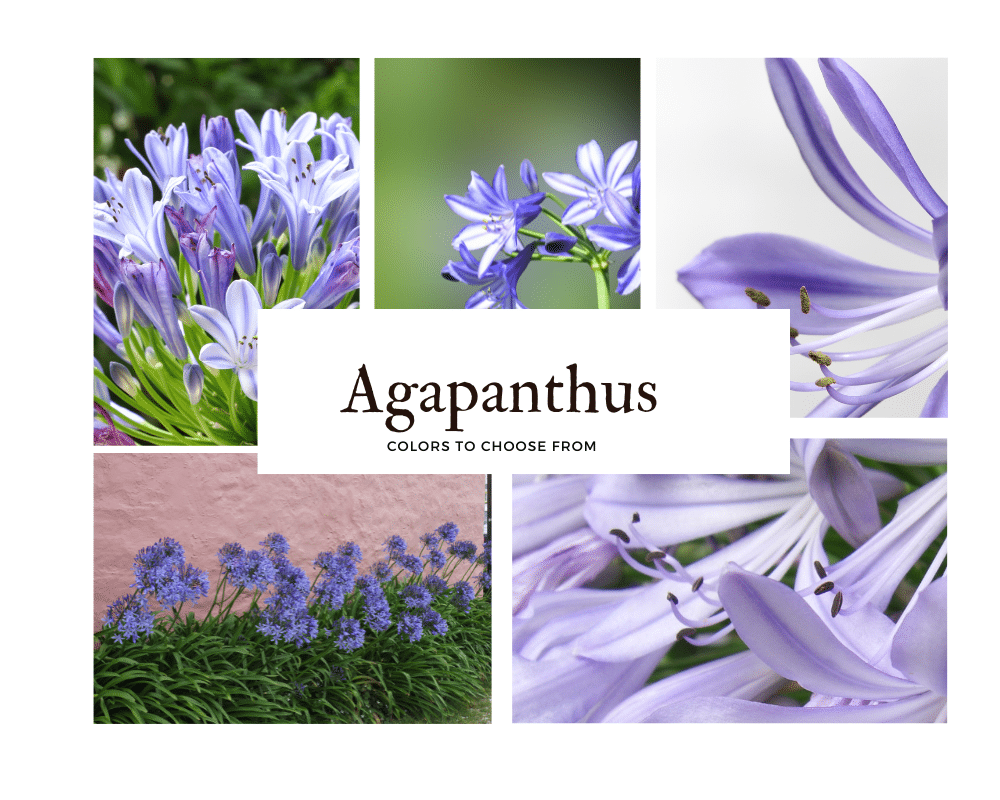
Agapanthus produce tall globes of color, high on long stems above a dense mass of curving strap-like leaves. Look for the large globes, made up of many tiny trumpet-shaped flowers in shades of blue, dark to light, and white, which can include pink and multiple colors.
Agapanthus-Origins and Growing Requirements
Track The Agapanthus Progress Across The World
Agapanthus was discovered by European traders in South Africa and traveled in wooden trading ships to Europe and throughout the world. They became so well appreciated by all kinds of gardeners so fast that today you can tell on a map of the world where the ships made stops. This is because everyone wanted some, and they were planted at each of the stops!
How It Got It’s Names
This popularity created some confusion as the plant developed many regional names. They are often called the “Lily of the Nile,” although they come from much farther south than any part of the Nile River. In Australia, they can be called the “Star of Bethlehem” because as summer bloomers, they blossomed in time for Christmas! Visiting gardens in the UK, we noticed that the Brits liked to call them African Lilies! They are immensely popular along the Mediterranean (and I don’t know what they call them at all!)
Even identifying their botanical family has been taxonomically confusing! Originally placed in the Lily family (liliaceae), the plant was then moved to the Amaryllis (amaryllidaeae) family and now resides in its own family, the Agapanthaceae!
Why Do Plant Names Change as Fast as We Learn Them?
Botanists do the best they can in the environment they live and work in. Traditionally people categorized plants because of how they looked and perhaps influenced by where they were found. Today we use DNA testing, and that has added another layer of change. If it makes you feel better, I read that most of the DNA testing is done, and we should all feel safe learning the newest plant names!
Agapanthus-When to Plant Them
In cool climates, plant agapanthus in spring after all danger of frost has passed. Plant them when the soil temperature reaches 50 degrees F or 10 degrees C.
In warm climates, you can also plant during fall or winter. I garden in zone 10, and winter planting works for us.
Agapanthus-Where and How to Plant Them
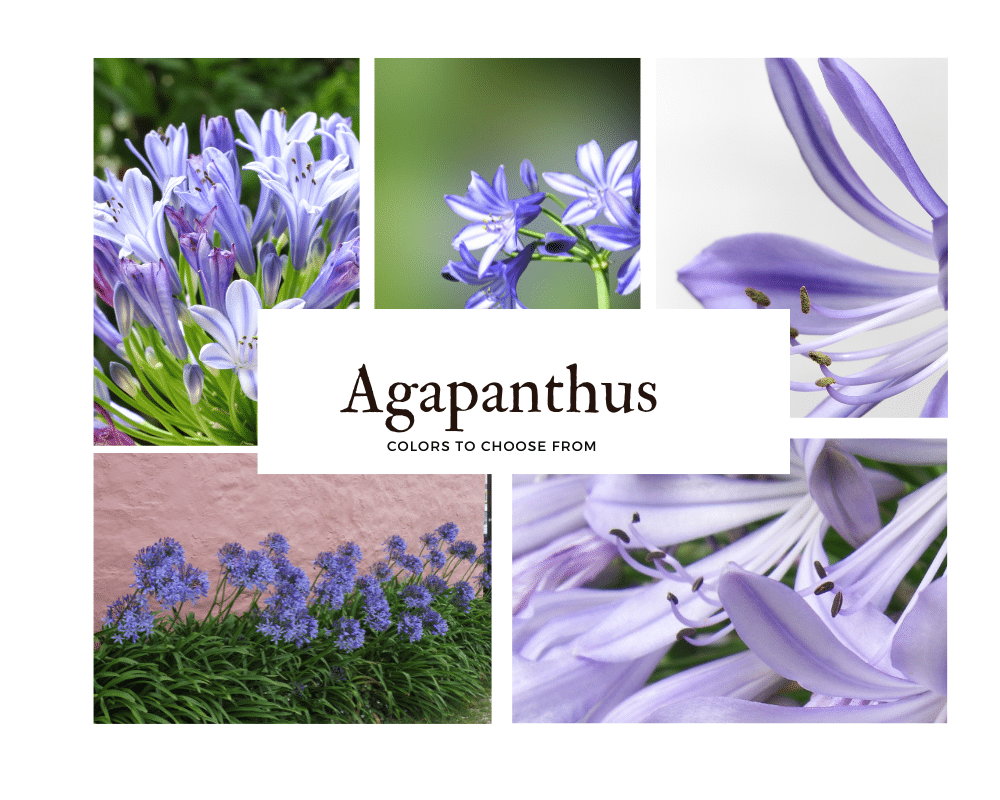
Planting Zones: agapanthus is considered hardy in zones 8-11. In these warmer zones, you can leave the rhizomes in the ground. There are some varieties bred for zone 7. Check the varieties carefully; Blue Yonder and Blue Heaven are two such hardy varieties to look for if your garden is in a cooler zone.
There are two types of agapanthus:
- Deciduous agapanthus will lose leaves in winter.
- Evergreen agapanthus is a tropical variety. In cooler climates, bring the rhizomes indoors for winter.
How do I know which type is hardy? After summer is over, the deciduous plant will shed its leaves and become dormant.
In zones 8-9, water the soil every few weeks to prevent complete dryness for the deciduous varieties.
In zones 6-7, apply 4″ of mulch to the soil above the plants.
How To Plant Agapanthus In Cold Climates
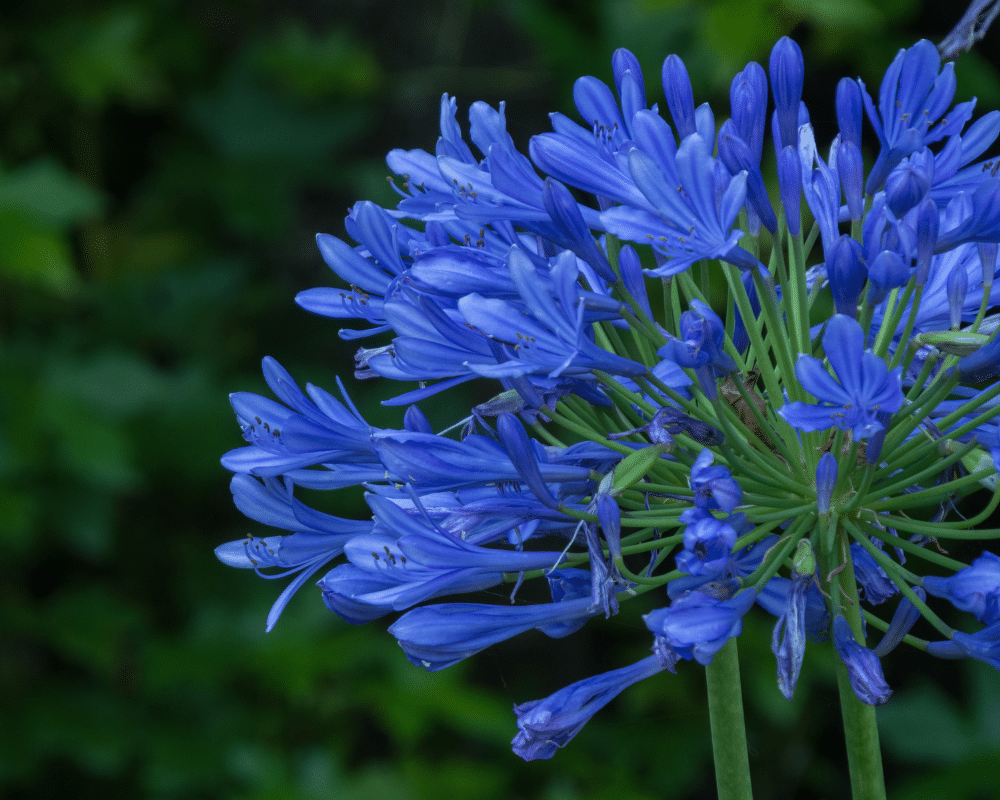
If you love agapanthus and your garden is colder, you can bring the plants indoors in pots. Next, provide a sunny window or a grow light positioned about 2″ from the plant. Either type will overwinter in your house. Deciduous agapanthus will survive in a cool basement without bright light as they are dormant.
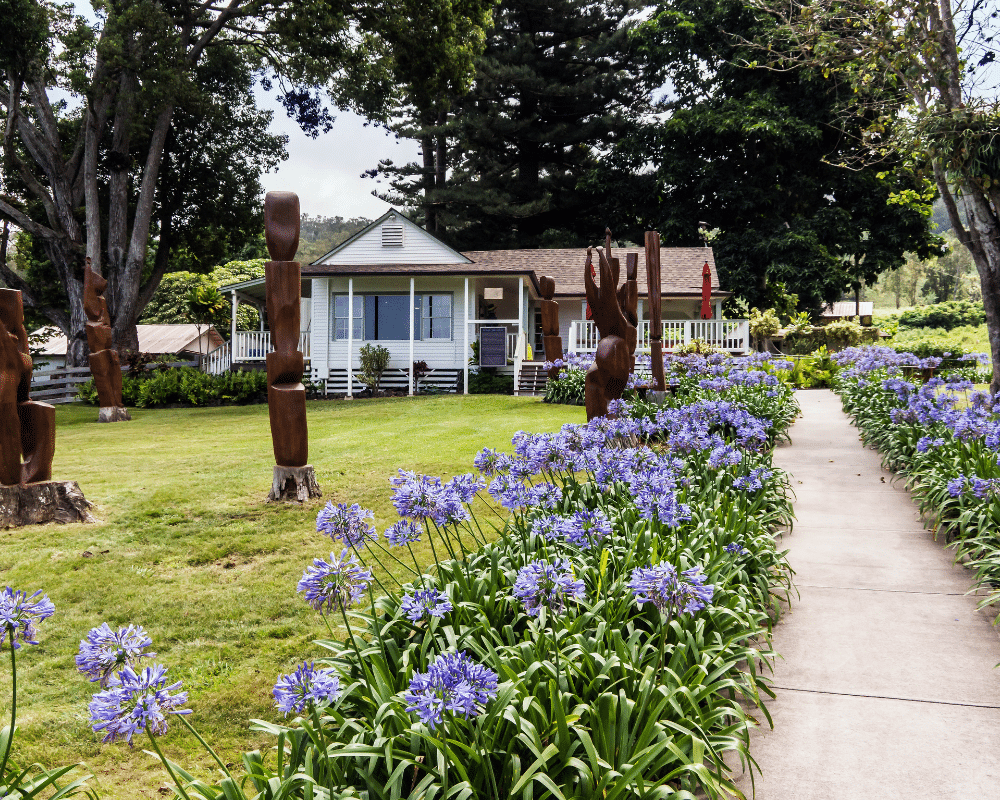
Plant Agapanthus in full sun. This photo is one we took on a mountain in Hawaii. They happily surrounded this lovely lawn.
Our garden shares hardiness Zones with Hawaii, but South Florida is hotter and more humid, and we try for a little partial shade.
You will see these flowers in bloom on the slopes of Mt Haleakala on the Hawaiian island of Maui.
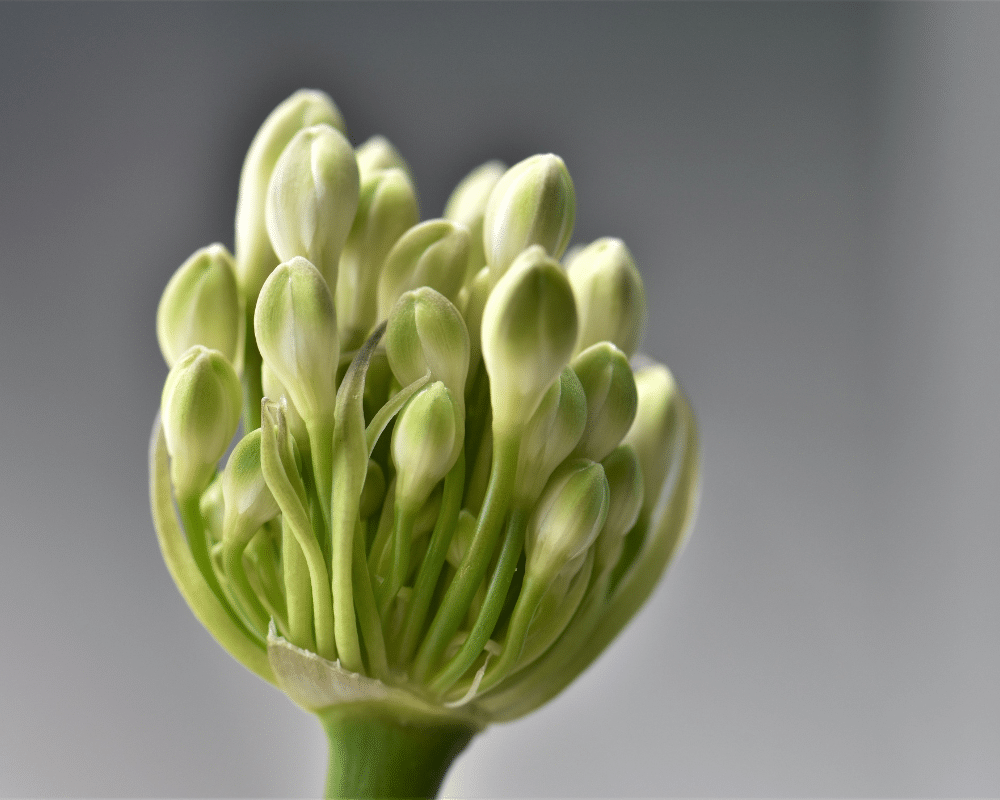
Provide well-drained soil and feed them a balanced granular fertilizer such as 10-10-10. Their best soil is moist but well-drained. The agapanthus is relatively unaffected by soil pH.
How to identify “Good Soil for Planting”
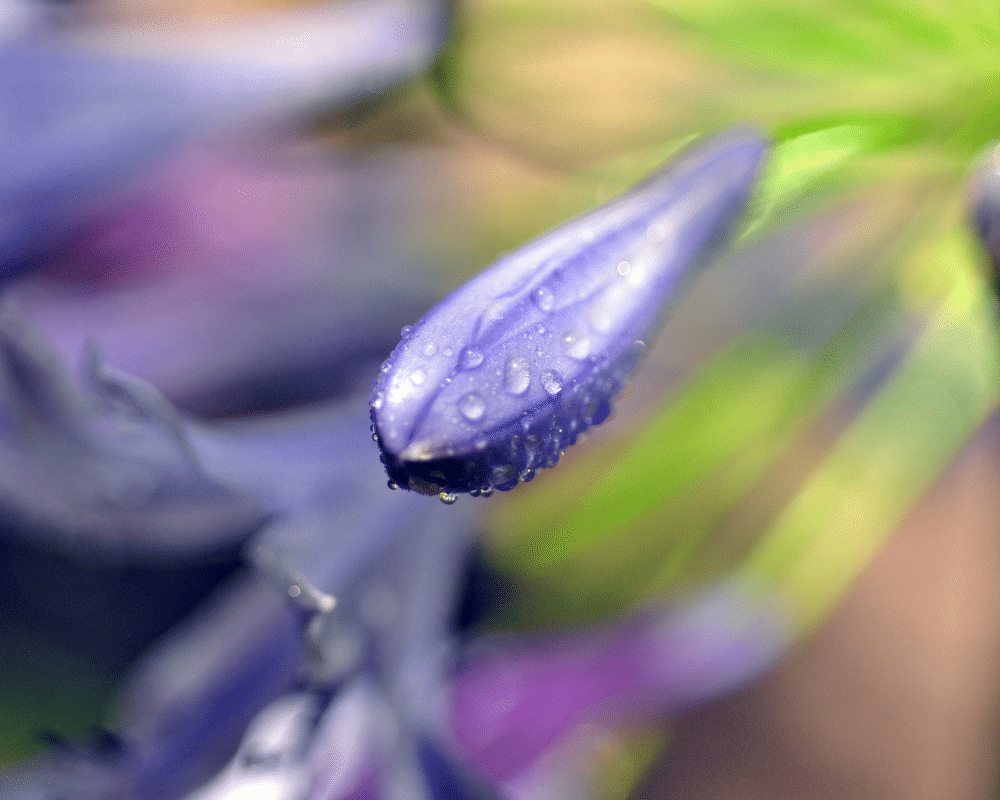
Agapanthus are moderately drought tolerant and will not thrive in soggy places. Water about one inch per week if you have insufficient rain.
In my coastal Florida town, they thrive in roadway medians, a place where nobody fusses about them!
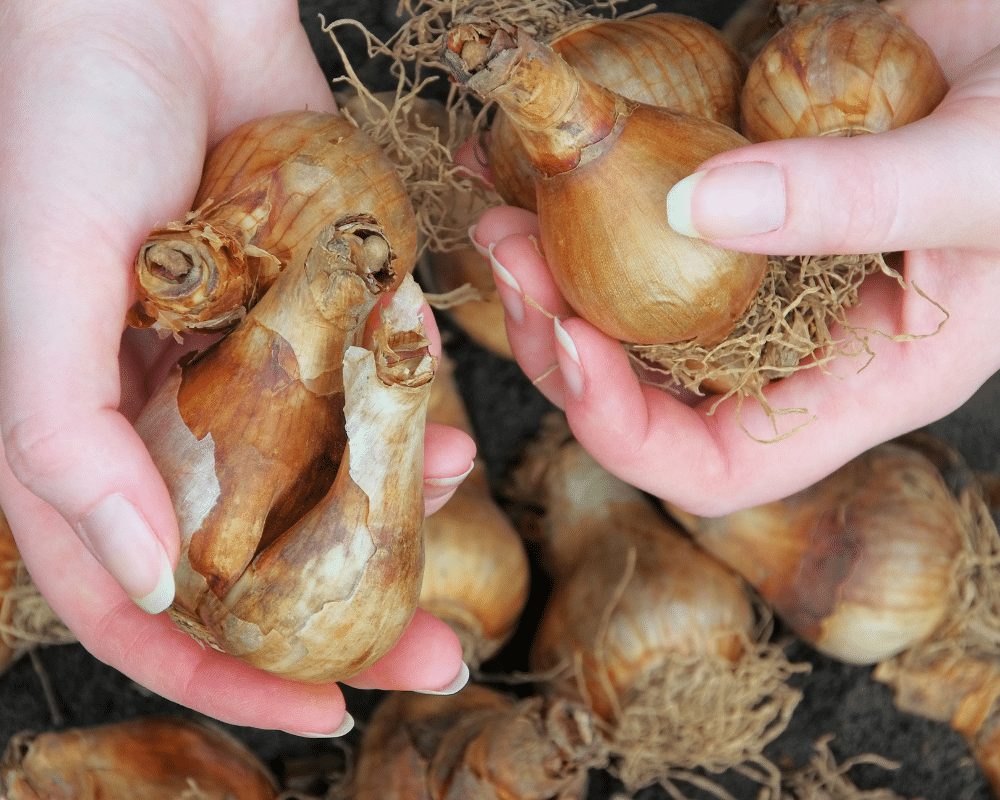
How deep to plant Agapanthus bulbs
Plant the tubers pointy sides up and about 1-2″ deep and about 12-18″ apart. (Give the taller varieties the greater distance.)
(These are bulbs, not Agapanthus)

When planting bare-root plants, ensure the roots are unfurled in soft soil so they can spread. In planting from containers, dig a hole as deep as the pot and twice as wide. Loosen the soil at the bottom and backfill, ensuring there are no air pockets. Water all of them well.
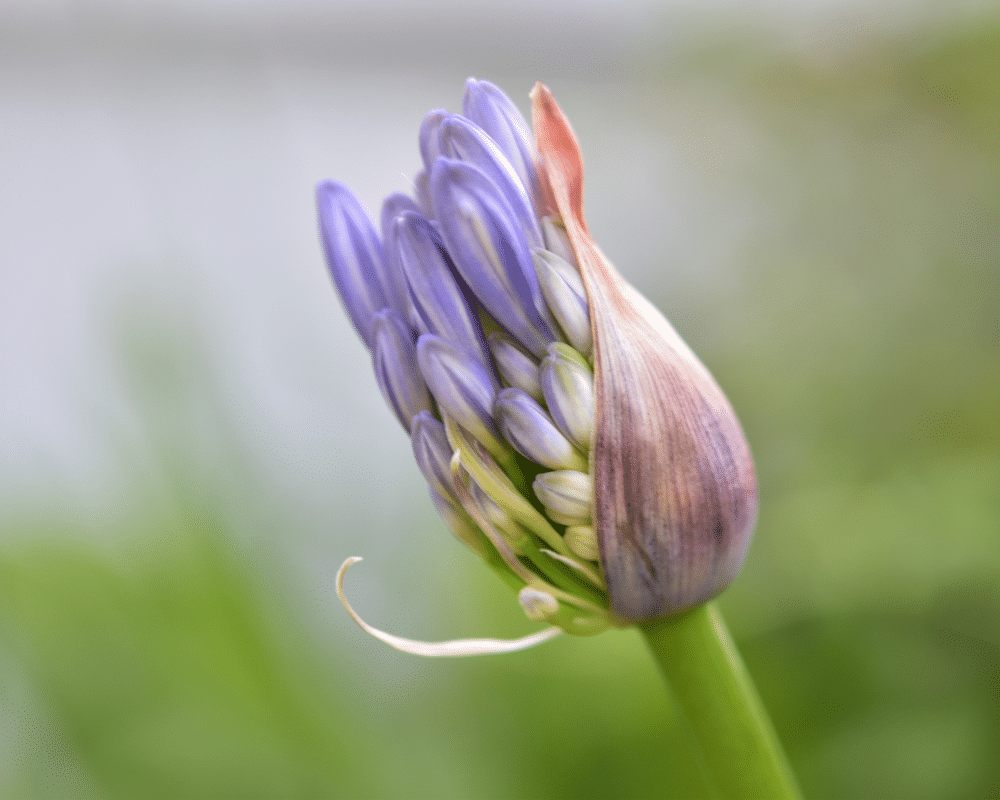
When planting in containers, a 12″ diameter container is suitable for one plant. Increase the pot size as the plant grows, but a little reluctantly. The agapanthus blooms best when space is tight. Agapanthus breaks containers often enough that it is wise only to use planters that are widest at the top. This makes getting them out of the container much easier.
What to Plant With Agapanthus
Good companion plants for agapanthus include these:
- Daylilies
- Allium
- Dianthus
- Hydrangea
- African Daisy
How Long Until My Agapanthus Produces Flowers?
If you have purchased a plant that is a named cultivar, it will be a cloned plant and should bloom in the first or second year. Agapanthus planted as seeds will take about four years to bloom.
Summary,
Europeans have admired and coveted the Agapanthus for centuries, and we are no different. The flower traveled on ships of traders, including the East Indian Company, and first appeared in European literature in 1679. Today we are still writing and planting them everywhere we can.
For more information on this unique flower, read these:
“Agapanthus, How to Grow the Lily of the Nile”
“How to Grow Agapanthus in Containers and Pots“
Here is an online dealer in Agapanthus; you can click on the photos for full descriptions and add your planting zone.
Agapanthus dealer: Plant Delights. You will find a choice of sellers, note that the appropriate planting zones are listed. Not all varieties suit all zones.
